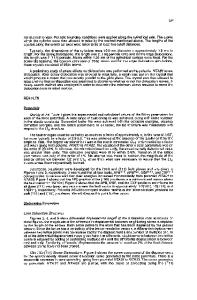Effect of accelerating voltage on planar and axial channeling in ordered intermetallic compounds
- PDF / 2,423,081 Bytes
- 7 Pages / 576 x 792 pts Page_size
- 64 Downloads / 391 Views
The ternary site occupancy of two alloys, vanadium in NiAl + V and hafnium in nickel-rich, boron doped Ni 3 Al + Hf, was determined by ALCHEMI, or atom location by channeling enhanced microanalysis. Vanadium exhibited a preference for the aluminum sublattice in NiAl, and hafnium preferentially occupied the aluminum sites in Ni 3 Al. Spectra were acquired over a range of accelerating voltages from 80 kV to 200 kV. Delocalization effects were observed to increase as the accelerating voltage increased, which thus reduces the accuracy of the ALCHEMI data. For NiAl + V, both planar and axial channeling were performed, and delocalization effects were greater for axial channeling, further reducing the accuracy of the ALCHEMI data.
I. INTRODUCTION ALCHEMI, or atom location by channeling enhanced microanalysis, is a transmission electron microscope (TEM) technique that uses the orientation dependence of x-ray emissions to determine the lattice site occupancy of elemental additions to compounds.1'2 Under conditions of strong dynamical electron scattering the incident plane wave sets up standing Bloch waves within the crystal. At certain orientations the standing wave modulation across the unit cell is such that a maximum coincides with a particular crystallographic site containing a specific atomic species. This produces an enhancement of the x-ray peak intensity for that element. ALCHEMI experiments can be performed by acquiring x-ray spectra for both positive and negative values of the deviation parameter from the Bragg condition, sg, at a suitable plane. In an alternative method, spectra may be recorded at, and away from, a zone axis.3 So, for example, in a compound Aj,Bz + X, the integrated x-ray intensity of the element X, Nx, is ratioed to both NA and iVB, the integrated x-ray intensity of the elements A and B, respectively, for x-ray spectra acquired at both +sg and — sg. If either Nx/NA or NX/NB is independent of sg, this indicates that the ternary element occupies either the A or B sublattice, respectively. However, if the ternary addition is partitioned between the two sites, this method is unsatisfactory and simple comparison of the ratios of the x-ray intensities will not provide a clear result.4 It is possible to deduce the fraction, F, of the ternary element, X, on each sublattice in the compound AyBz by comparison of the integrated x-ray intensities from a
'Current address: School of Materials Science and Engineering, University of New South Wales, Kensington, New South Wales 2033, Australia. J. Mater. Res., Vol. 7, No. 8, Aug 1992 http://journals.cambridge.org
Downloaded: 14 Mar 2015
each element in spectra acquired at a strongly dynamical scattering, or 'channeling', condition and at a weakly dynamical scattering, or 'random' condition. From these data the concentration Fx of an element X on the A atom sites can be quantified using the expression
Nl/Nl -
(1)
where N\, N%, and N% are the characteristic x-ray integrated intensities of elements A, B, and X at the channeling position, and A7*, N§, and Nx
Data Loading...











